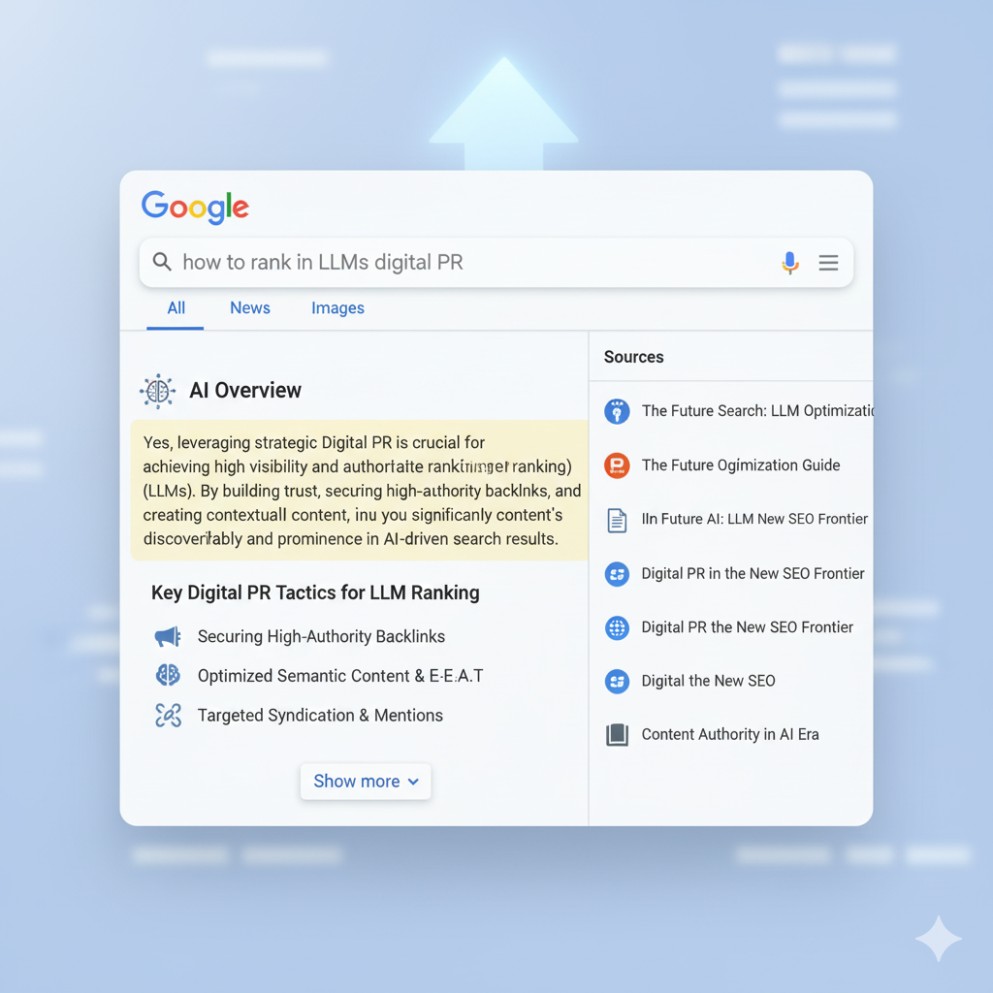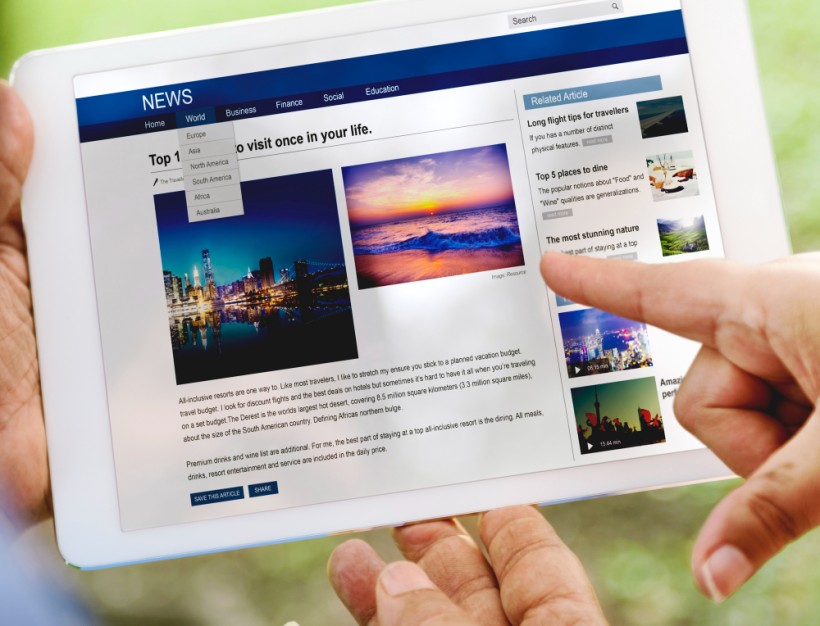Large language models gather information from many places, but they rely most on sources that seem steady, well-supported and widely referenced. That creates a clear challenge: it is not enough for a brand to have good content on its own site. The brand also needs to appear in the places these systems treat as dependable.
This is where digital PR becomes useful. Digital PR creates the outside signals that models notice: mentions in respected publications, expert views that get echoed by journalists, and data that reporters and researchers cite in their own work. When these signals build up, a brand becomes easier for an LLM to recognise and more likely to be included when the model writes an answer.
This article explains how to plan and run digital PR with that outcome in mind.
How LLMs Choose Sources and Why Digital PR Drives AI Visibility
Large language models (LLMs) use two key mechanisms to pull content: the data they were trained on historically and the web-based sources they can retrieve at inference time (a process often called retrieval-augmented generation, or RAG).
Research from Seer Interactive found that ranking on page one of Google had a correlation of approximately 0.65 with being mentioned in LLM answers, while the number of backlinks had weak or even neutral correlation.
Also, a recent study by AirOps analysed more than 45,000 citations across answer-engines and found that when a brand is both mentioned by name and cited as a source, it is about 40% more likely to resurface in subsequent runs than brands cited only.
Taken together, these findings highlight why digital PR becomes essential in this environment:
- Gaining coverage and mentions in authoritative outlets helps your brand become visible in the sources LLMs pull from.
- Having your data or commentary repeated across multiple trusted sites strengthens the signal that you’re relevant to a topic.
- The strength and frequency of those signals matter more than just one high-ranking page or many links in isolation.
In short, to increase your chances of being used by an LLM in an answer, you need more than a good on-site article. You need a broader footprint of authoritative mentions, data-led content, and repeated references across trusted domains — exactly what digital PR is positioned to deliver.
Digital PR Strategies to Increase LLM Visibility and AI Citations
Start with the right topics. Look for subjects where your brand can add something genuinely useful, then identify which publications tend to influence conversation in that space. This helps you spot both the gaps you can fill and the outlets worth prioritising.
Build an asset worth covering. Data-led work continues to perform best. In a recent survey, 99.4% of practitioners said they pitch data-led content and 96.5% said they use expert commentary, making these the two most common tactics in digital PR. One study also found that content built around first-party data drove about 51% more traffic and 34% more links than content without original data. When you publish a study, survey or benchmark that others reference, you create repeated mentions of your brand and your findings, which strengthens the signals models detect.
Support the asset with credible experts. Named experts with real credentials produce strong authority signals, especially when quoted across several outlets. In the BuzzStream report, 96.5% of practitioners said they provide expert commentary, showing how central this tactic is when building authority for LLMs.
Earn coverage where it counts. The quality of linking domains matters. High-authority publications tend to shape how models understand a topic, so placements in trusted outlets carry more weight than a large number of weaker links. Focusing on relevance and authority in your outreach will produce stronger signals over time.
Reinforce the story on your own site. If a journalist covers your research or quotes your expert, make sure the linked or referenced page on your site is well structured, clear and helpful. This alignment strengthens the connection between the mention and the context LLMs can trace back to your content.
Keep the work alive. Evergreen assets that are updated regularly perform best over time. Models often favour fresh, recent data, especially for queries involving dates or trends. Refreshing your benchmark or study each year helps maintain coverage, attract new mentions and build a lasting footprint.
Treat every campaign as part of a longer arc. LLM recognition grows through repeated exposure. Each time your data is cited, your expert is quoted and a respected publication includes your work, you strengthen the pattern models rely on. A steady flow of high-quality campaigns will create far more durable authority than occasional spikes in coverage.
A simple use case is this: a fintech company publishes a “2025 global fintech funding benchmark,” adds commentary from its chief economist, hosts the data on its site and pitches the findings to relevant industry and business publications. Several outlets cover the data, quote the economist and link back to the brand. Over time, these repeated signals build a footprint. When someone asks an LLM “what is the size of global fintech funding in 2025?” The model has multiple reasons to treat that brand as a source.
How to Measure LLM Visibility and Digital PR Performance
Traditional metrics like link count or ranking movement still matter, but they do not show whether your brand is being picked up by models. To understand that, you need to watch for signals across three areas.
The first is how often your brand shows up in AI-generated answers. This means checking your presence in tools such as Perplexity, Gemini’s AI overviews and ChatGPT with web access. It can also involve using specialised GEO tools like Profound, Goodie, and Writesonic that monitor your brand’s AI search footprint constantly. These checks won’t give you a complete picture, but they show whether your coverage and mentions are starting to appear in the places people now turn to for answers.
The second area is the quality of coverage you earn. Mention patterns tell you whether your PR work is landing in outlets that are more likely to influence how models see your brand. By tracking which publications cover your work, you can see whether your visibility is growing in relevant, high-authority places or mainly in low-impact sites. If your coverage tilts too heavily toward low-authority or unrelated outlets, you may need to adjust your pitching strategy.
The third area is the lift you see in demand and reputation. Branded search, direct traffic, newsletter sign-ups and inbound enquiries tend to increase when a brand receives meaningful coverage. While these signals do not prove LLM visibility on their own, they help confirm that your external presence is expanding. Models often draw on sources that show sustained authority and repeated references over time.
Together, these three measures provide a workable view of whether your digital PR programme is building the footprint that LLMs recognise.
Final Thought on How to Rank on LLMs Using Digital PR
Authority is no longer earned only through what you publish on your own site, but through how the wider web reflects you back. Digital PR shapes that reflection.
The deeper opportunity is not just better visibility, but a chance to influence how a whole category is understood. When your research becomes the reference point or your expert becomes the voice journalists return to, you are not only earning coverage, you are shaping the raw material that future answers are built from.
If you need help in creating strong data stories, earning coverage from respected publications and building the kind of authority models rely on, Column can help. We work with brands to develop the signals that lead to genuine visibility across the modern web. Learn more today.

Johnson is a Content Strategist at Column. He helps brands craft content that drives visibility and results. He studied Economics at the University of Ibadan and brings over years of experience in direct response marketing, combining strategy, creativity, and data-backed thinking.
Connect with him on LinkedIn.





